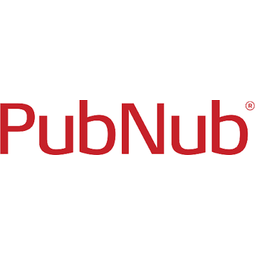Download PDF
Cabify Enhances Rider Experience with PubNub
Applicable Industries
- Automotive
- Cities & Municipalities
Applicable Functions
- Quality Assurance
Use Cases
- Visual Quality Detection
Services
- Testing & Certification
The Challenge
Cabify, a ride-sharing service operating in over 90 cities across 11 countries, was facing a significant challenge in maintaining the high-quality experience they promised their riders. The company prides itself on its professional drivers, clean and modern cars, and giving riders more control over their journey preferences. However, the company was struggling with its in-house alert system, which was crucial for connecting riders with nearby and available drivers. When a rider requested a ride, Cabify had to quickly alert only those drivers who fit the need, a process that could require up to 80 alerts sent simultaneously. As Cabify expanded its operations, the in-house alert system was unable to cope with the increasing demand, threatening the company's commitment to quality and customer satisfaction.
About The Customer
Cabify is a ride-sharing service that operates in over 90 cities across 11 countries. The company differentiates itself from other ride-sharing services by focusing on quality. Cabify employs professional drivers and ensures that all cars are clean and modern. The company also gives riders more control over their journey preferences. However, Cabify was struggling with its in-house alert system, which was crucial for connecting riders with nearby and available drivers. The system was unable to cope with the increasing demand as the company expanded its operations, threatening Cabify's commitment to quality and customer satisfaction.
The Solution
To overcome this challenge, Cabify turned to PubNub, a real-time messaging and push notification service. The decision to partner with PubNub was influenced by a previous acquisition that had a positive experience with the service. With PubNub, Cabify was able to ensure that no riders would be kept waiting or get a car that didn’t meet their needs. The new system also addressed Cabify's concerns about reliability and scalability. PubNub's messaging solution was able to handle the high volume of alerts required by Cabify's operations, ensuring that drivers could quickly and efficiently find their next fare. This solution not only improved the rider experience but also gave Cabify the confidence that their messaging system could scale with their growth.
Operational Impact
Related Case Studies.

Case Study
Turning A Stadium Into A Smart Building
Honeywell created what it called the “intelligent system” for the National Stadium in Beijing, China, turning the venue for the opening and closing events at the 2008 Summer Olympics into a “smart building.” Designed by highly controversial artist Ai Weiwei, the “Bird’s Nest” remains one of the most impressive feats of stadium architecture in the world. The 250,000 square meter structure housed more than 100,000 athletes and spectators at a time. To accommodate such capacity, China turned to Honeywell’s EBI Integrated Building Management System to create an integrated “intelligent system” for improved building security, safety and energy efficiency.
.png)
Case Study
Smart Street Light Network (Copenhagen)
Key stakeholders are taking a comprehensive approach to rethinking smart city innovation. City leaders have collaborated through partnerships involving government, research institutions and solution providers. The Copenhagen Solutions Lab is one of the leading organizations at the forefront of this movement. By bringing together manufacturers with municipal buyers, the Copenhagen Solutions Lab has catalyzed the development and deployment of next-generation smart city innovations. Copenhagen is leveraging this unique approach to accelerate the implementation of smart city solutions. One of the primary focus areas is LED street lighting.

Case Study
Integral Plant Maintenance
Mercedes-Benz and his partner GAZ chose Siemens to be its maintenance partner at a new engine plant in Yaroslavl, Russia. The new plant offers a capacity to manufacture diesel engines for the Russian market, for locally produced Sprinter Classic. In addition to engines for the local market, the Yaroslavl plant will also produce spare parts. Mercedes-Benz Russia and his partner needed a service partner in order to ensure the operation of these lines in a maintenance partnership arrangement. The challenges included coordinating the entire maintenance management operation, in particular inspections, corrective and predictive maintenance activities, and the optimizing spare parts management. Siemens developed a customized maintenance solution that includes all electronic and mechanical maintenance activities (Integral Plant Maintenance).

Case Study
Buoy Status Monitoring with LoRa
The Netherlands are well-known for their inland waterways, canals, sluices and of course port activities. The Dutch Ministry of Infrastructure indicates that there are thousands of buoys and fixed items in and near water environments that would profit from IoT monitoring. One of the problems with buoys for example, is that they get hit by ships and the anchor cable breaks. Without connectivity, it takes quite some time to find out that something has happened with that buoy. Not to mention the costs of renting a boat to go to the buoy to fix it. Another important issue, is that there is no real-time monitoring of the buoys at this moment. Only by physically visiting the object on the water, one gains insight in its status.







